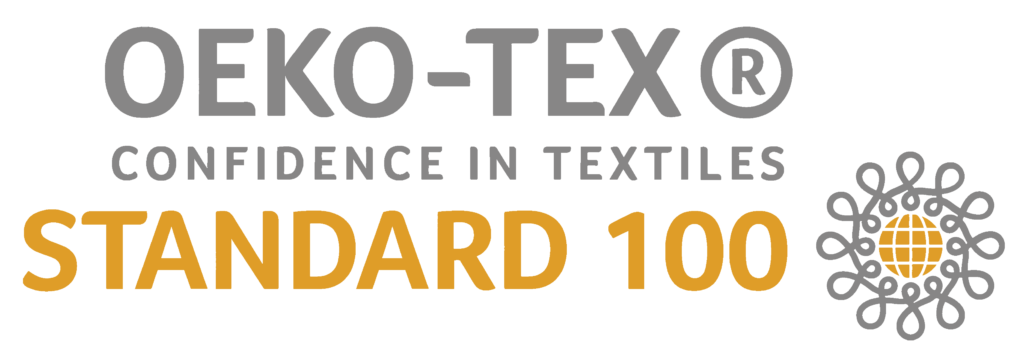Today, the consumer in general is more aware of how the products they acquire are manufactured. Fortunately, this situation has led manufacturers to adopt more hygienic, more ethical and much more responsible production practices.
So if you have recently bought a garment with the label Oeko-Tex, probably feel great curiosity to know how important it entails.
The association of Oeko-Tex It currently has its headquarters in Zurich and exists since 1992. The great diversity of certificates and norms, among which is Oeko Tex or Oeko Tex 1000, is really a reinforcement when it comes to strengthening consumer's confidence. It currently operates in 39 countries.

Regarding social security and responsibility, Oeko-Tex, in addition to being one of the best known labels in the world, maintains immeasurable respectability. That is why it is important to know what it represents and the difference with respect to other certificates.
Here we leave you a guide practice about everything related to Oeko-Tex.
What is Oeko-Tex?
Created in Switzerland in 1992, on the occasion of the growing concern for product security, it presented its most relevant certification: standard 100. The products that include this label/certificate are free of the 100 most harmful substances known to be Dangerous for both people and the environment.
It is important to understand the size of the tests to which the products are submitted, every detail of each garment, each button, zipper or coatings that have been applied to the article, are subjected to tests separately to detect any possible chemical.
This is of vital importance, because when a person sleeps with some sheets, any substance not detected that can be considered toxic can be absorbed by the body.
That is why, when acquiring products with Oeko-Tex certification, we guarantee that the sheets we are going to sleep with are safe.
The updates of OEKO-TEX standards are annual, so they are reviewed and updated every year. A total of seventeen independent laboratories around the world prove products. After 12 months, manufacturers must re-request the update of their OEKO-TEX certifications.

What are the types of products of the Oeko-Tex 100 standard?
The so -called "Norma 100" covers a lot of articles and materials. By coherence, not all are evaluated under the same criteria. That is why Oeko-Tex has classified four kinds of products, organized under different parameters.
- Class #1: Baby products. They are the most regulated articles and subjected to stricter tests, since they are intended for babies and their skin is extremely sensitive, requiring special care.
- Class #2: Products that come into direct contact with the skin. They can be sheets, t -shirts, socks, underwear or other textiles such as towels.
- Class #3: Products that are very rarely in contact with the skin (as would be outer clothes).
- Class #4: Decoration products, such as furniture, curtains or tablecloths, among others.
Oeko-tex is better than the ecological?
OEKO-TEX is a safety and hygiene certification in a finished product. For example, we will assume that we buy some towels with the Oeko-Tex certification. Well, we can have the peace of mind that no harmful chemicals have been used when manufacturing or preparing your tissue. But Oeko-Tex certification is not synonymous with ecological. Is better.
Unfortunately, currently the words "echo" or "ecological" are excessively over -useful, and what is worse, misused. There are no concrete and uniform norms that manufacturers must carry out to label an article as "echo". This makes it really important to buy and always find products with OEKO-TEX certification.
It is also worth noting that Oeko-Tex certification does not measure the number of wires. That is, home textiles with Oeko-Tex certification do not have to have a greater number of wires. And they don't need it either. Good quality bedding is one that has been manufactured with first cotton.
What is Oeko-Tex 1000?
As we have already mentioned, standard 100 certifies that textiles and articles are free of hazardous substances. The normal 1000 is a bit different, certifying that the production facilities where articles have been manufactured are also respectful of the environment.
OEKO-TEX VS. Certification Gots
Today, companies request hundreds of certifications to evaluate their products and facilities. These certifications can measure from the level of security to sustainable manufacturing practices or animal welfare. The best known are Oeko-Tex and Gots.
What is the difference between Oeko-Tex and Gots?
Oeko-Tex certifies that products are not dangerous and determines their components. The articles are subjected to testing, demonstrating to be free of harmful levels of toxic substances.
Instead, Gots certifies the ecological production of materials such as linen or cotton. Gots addresses manufacturing, packaging, labeling, trade and distribution of all products that “have been developed at least 70% of certified organic fibers,” according to Your own website.
The Gots has two labels. "Organic", for materials with a minimum of 95% of organic fibers and another called "made with organic materials", which requires at least 70% organic fibers. Both organizations include ethical and fair employment practices requirements.
Where to buy bedding with Oeko-Tex certification?
When it comes to high quality bedding and with Oeko-Tex certificate, in LLARTEXTIL You will be able to find a fascinating line of the best articles.
The options you will find have neither toxic or bleach dyes, so they are completely safe not only for people, but also for the environment.
Llar items are made of top quality cotton, cultivated sustainably and spinning in fascinating towels and bedding.
Whether you are looking for a really comfortable bedding or bathroom, in Llar you will find a careful selection of great and absurdly comfortable options, it will surprise you!
High quality materials are the basis of textiles for your home. In LLAR we can help you find the bedding with Oeko-Tex certification perfect for your home.




Leave a comment